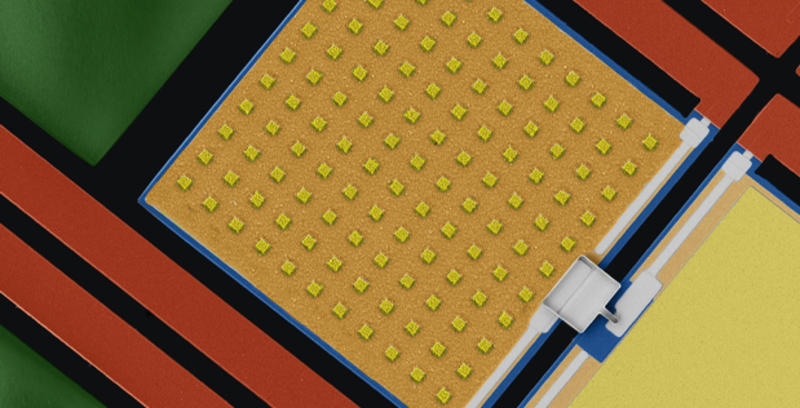BLACKEAGLE
SENIOR MEMBER
DARPA LightningStrike technology attracts army FVL interest
Marina Malenic, Washington, DC - IHS Jane's International Defence Review
09 March 2016

DARPA is sharing information from its Aurora Flight Sciences' LightningStrike X-Plane demonstrator with the US Army for its FVL programme. Source: Aurora Flight Sciences
Technologies from the US Defense Advanced Research Projects Agency's (DARPA's) LightningStrike vertical takeoff and landing (VTOL) X-Plane programme could assist the US Army as it crafts it Future Vertical Lift (FVL) concept, according to the official leading the effort.
"The army and the FVL programme are aware of what we're doing, and we share data and results," Ashish Bagai, a programme manager in DARPA's Tactical Technology Office, told IHS Jane's on 9 March. "The army has expressed interest in staying informed."
DARPA awarded the contract for the next stage of the LightningStrike programme to Aurora Flight Sciences in preparation for flight tests by the end of 2018. Aurora Flight Sciences bested Boeing, Karem and Sikorsky for the award announced on 3 March.
All four of the finalists offered unique concepts for the new X-Plane, Bagai said.
"VTOL has been a tricky field, there was a time when some thought that helicopter design would not advance further," he said. "We've been able to prove that that's far from the truth."
Aurora Flight Sciences is working with Rolls-Royce and Honeywell to build the new tilt-wing- and tilt-canard design. Rolls-Royce's AE 1107C turboshaft engine powers three Honeywell electric distributed propulsion (EDP) generators that in turn drive 24 ducted fans distributed on both the wings and canards.
The goal of the LightningStrike programme is to design an aircraft that is highly efficient in both hover mode and during high-speed forward flight, according to Bagai. At its current projected gross weight of 5,400 kg, the Aurora Flight Sciences X-Plane technology can ultimately be applied to either manned or unmanned future concepts, according to Bagai.
"Helicopters that size typically carry six to nine people," he said.
At an expected top speed of 300 kt to 400 kt, the aircraft would be almost twice as fast as contemporary helicopters, Bagai added.
To read the full article, Client Login
(327 of 426 words)
DARPA LightningStrike technology attracts army FVL interest | IHS Jane's 360
Marina Malenic, Washington, DC - IHS Jane's International Defence Review
09 March 2016

DARPA is sharing information from its Aurora Flight Sciences' LightningStrike X-Plane demonstrator with the US Army for its FVL programme. Source: Aurora Flight Sciences
Technologies from the US Defense Advanced Research Projects Agency's (DARPA's) LightningStrike vertical takeoff and landing (VTOL) X-Plane programme could assist the US Army as it crafts it Future Vertical Lift (FVL) concept, according to the official leading the effort.
"The army and the FVL programme are aware of what we're doing, and we share data and results," Ashish Bagai, a programme manager in DARPA's Tactical Technology Office, told IHS Jane's on 9 March. "The army has expressed interest in staying informed."
DARPA awarded the contract for the next stage of the LightningStrike programme to Aurora Flight Sciences in preparation for flight tests by the end of 2018. Aurora Flight Sciences bested Boeing, Karem and Sikorsky for the award announced on 3 March.
All four of the finalists offered unique concepts for the new X-Plane, Bagai said.
"VTOL has been a tricky field, there was a time when some thought that helicopter design would not advance further," he said. "We've been able to prove that that's far from the truth."
Aurora Flight Sciences is working with Rolls-Royce and Honeywell to build the new tilt-wing- and tilt-canard design. Rolls-Royce's AE 1107C turboshaft engine powers three Honeywell electric distributed propulsion (EDP) generators that in turn drive 24 ducted fans distributed on both the wings and canards.
The goal of the LightningStrike programme is to design an aircraft that is highly efficient in both hover mode and during high-speed forward flight, according to Bagai. At its current projected gross weight of 5,400 kg, the Aurora Flight Sciences X-Plane technology can ultimately be applied to either manned or unmanned future concepts, according to Bagai.
"Helicopters that size typically carry six to nine people," he said.
At an expected top speed of 300 kt to 400 kt, the aircraft would be almost twice as fast as contemporary helicopters, Bagai added.
To read the full article, Client Login
(327 of 426 words)
DARPA LightningStrike technology attracts army FVL interest | IHS Jane's 360

